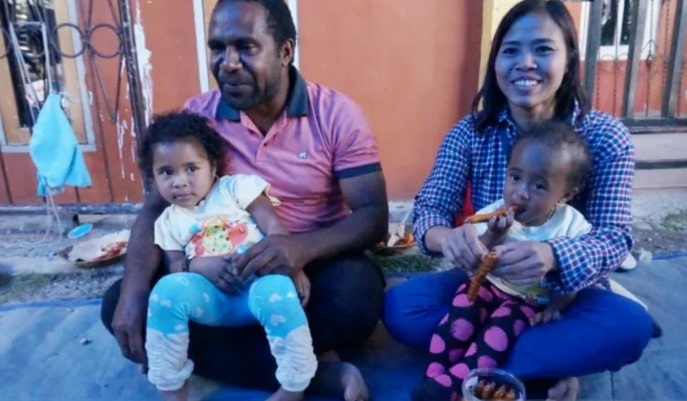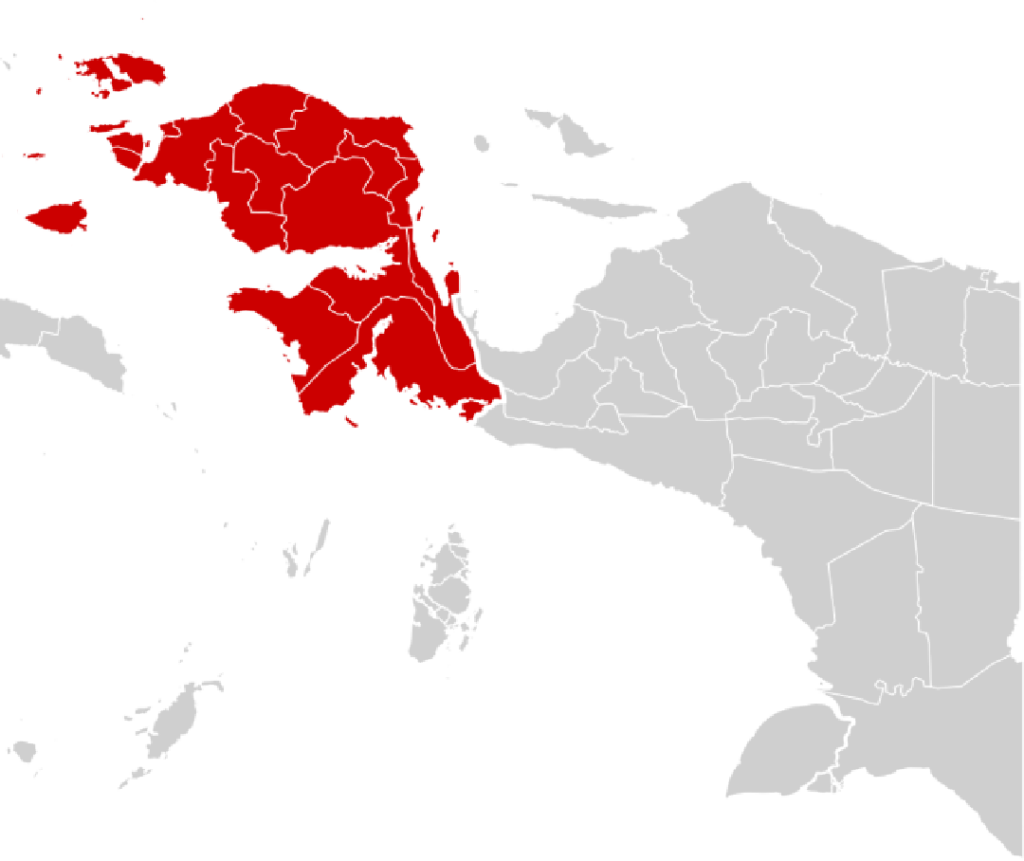In the far eastern edge of Indonesia lies Papua, a land of sweeping landscapes, rich cultures, and untapped potential. Its vast jungles, mountainous terrain, and winding rivers paint a portrait of a province unlike any other in the archipelago. Yet, behind its grandeur lies a profound paradox: Papua is one of the least populated regions in the country, despite being the second-largest island after Kalimantan. According to data from GoodStats, Papua’s population density remains the lowest in Indonesia, a factor that significantly hinders equitable infrastructure, health services, and economic growth.
In response, the Government of Indonesia has revitalized its approach to the transmigration program, focusing on local empowerment, food security, and regional development. But this isn’t the transmigration of the past. The current policy is rooted in respect for Indigenous Papuans, aligned with the region’s Special Autonomy (Otsus), and designed to unify—not divide—the nation. It aims to bridge economic gaps, not erase cultural identities.
And while separatist narratives often exploit misinformation to stir division, the reality on the ground tells a different story: one of collaboration, respect, and national solidarity.
A Region of Promise Held Back by Sparse Population
Papua accounts for more than 22% of Indonesia’s total land area but less than 1.5% of its total population. The isolation of many villages, coupled with limited road access, communication, and healthcare, makes service delivery a logistical challenge. In many cases, doctors, teachers, and development programs struggle to reach communities nestled deep within valleys or rainforests. Economic activities remain stagnant in these hard-to-access zones.
This sparse population distribution creates a vicious cycle: infrastructure can’t be built because the population is too scattered, and communities remain isolated because there’s no infrastructure.
Enter the government’s revised transmigration program—an initiative not to displace or dilute local culture, but to activate economic zones, cluster services, and foster equitable development—with the full participation of Indigenous Papuans themselves.
Not the Old Transmigration: A Local, Inclusive Approach
The word “transmigration” once triggered mixed emotions in Papua. Past policies—particularly during the New Order era—brought in settlers from Java and other islands, sparking fears of cultural erosion, land disputes, and demographic change. The government of today has learned from history.
Under President Joko Widodo, and now continuing under President Prabowo Subianto, the transmigration program in Papua has been redesigned with local wisdom and autonomy at its core. This is not a program that imports outsiders to settle the region. It is a “local transmigration” (transmigrasi lokal) policy—relocating residents within Papua to more strategic, development-ready areas.
Minister of Villages, Development of Disadvantaged Regions, and Transmigration, Iftitah Sulaiman Suryanagara, made it clear: “There will be no transmigration of non-Papuans into Papua. This is purely a local-based movement to empower our brothers and sisters in Papua.”
This commitment is backed by policies embedded in Otonomi Khusus (Special Autonomy), which grants the province authority over land rights, cultural preservation, and public resource management. Transmigration programs in Papua are now supervised in collaboration with local governments, customary (adat) leaders, and community stakeholders.
Real Benefits for Real People
The transmigration zones established in regions like Merauke, Salor, and Momiwaren have already begun yielding positive outcomes. In South Papua’s Salor area, for instance, the government is building a modern agricultural hub, complete with irrigation, roads, and housing. These are not “settlements”—they are integrated economic centers.
Local Indigenous Papuans are not being sidelined—they are leading the transformation. In 2025, the government launched a national initiative called Ekspedisi Patriot Transmigrasi, deploying over two dozen young Indigenous Papuan researchers to help map potential in transmigration areas and advise on local-friendly development strategies.
As reported by InfoPublik, programs in Papua Selatan are interwoven with food security and agribusiness, prioritizing Indigenous participation in agricultural training, job creation, and market integration.
In Manokwari Selatan (Papua Barat), the government invested Rp 7.8 billion into developing public facilities within the transmigration area. These include clean water facilities, electricity, roads, schools, and places of worship—clearly demonstrating that the policy is not about relocating people for the sake of statistics but building thriving communities.
And most tellingly, Indigenous leaders support it.
Local Voices, National Unity
Separatist groups often claim that government programs, including transmigration, are veiled attempts to erase Papuan identity. But in contrast, a wave of support has emerged from local traditional leaders themselves—the true cultural stewards of the land.
In a powerful statement made by Nicolaus Ndepi, a respected Asmat tribal leader, he urged the government to accelerate the transmigration program, praising its role in improving welfare and infrastructure access. “Our people want progress. We don’t want to be left behind,” he said.
Similarly, traditional leaders in Boven Digoel, Yahukimo, and Mappi have voiced their endorsement of the program, seeing it not as a threat but as a long-overdue opportunity for Papuans to access housing, clean water, jobs, and education.
This grassroots support dismantles the separatist argument that all forms of state presence are hostile. In reality, the Indonesian state is investing in Papuan futures, working with—not against—local customs and communities.
Refuting the Separatist Narrative
It is undeniable that separatist groups have tried to weaponize Papua’s challenges—economic gaps, historic grievances, and identity politics—to stir unrest. But it is equally undeniable that the Indonesian government’s current efforts are grounded in inclusive development, social justice, and constitutional rights.
Separatists offer slogans. The government is offering schools, clinics, roads, markets, and dignity.
Moreover, Papua is an inseparable part of Indonesia, recognized by the UN, bound by history, and upheld by the Indonesian people. Indonesia’s commitment to Papuan development is not a political maneuver—it is a moral obligation. Transmigration is one expression of that commitment—not to dominate, but to connect.
And while challenges remain—land rights, capacity gaps, and social inclusion—the path forward is clear: development through unity, not disintegration through division.
Transmigration, When Done Right, Is a Tool of Justice
The essence of the new transmigration program in Papua is not relocation for the sake of numbers. It is strategic mobilization—with dignity and participation—to enable communities to access better resources and futures.
By concentrating populations in areas with strong infrastructure, the government can deliver healthcare, education, clean water, and jobs more efficiently. By creating economic hubs, new business ecosystems can emerge—led by Papuans. And by respecting adat institutions, the policy becomes not extractive but collaborative.
When framed as such, transmigration becomes not a demographic threat but a tool of social justice. It allows Papua to retain its cultural soul while stepping into an era of shared prosperity.
Conclusion
In 2025, as Indonesia prepares for a new chapter under President Prabowo Subianto, the path to inclusive national development must pass through Papua—not over it. The transmigration program, reimagined through the lens of local wisdom and Special Autonomy, is a model of how to get it right.
In the face of separatist rhetoric and decades of misunderstanding, the Indonesian government is showing that unity does not require uniformity. It requires respect, investment, and shared vision.
Papua is not being changed by outsiders. It is being strengthened by its own people, supported by a nation that refuses to leave any region behind.
One community at a time, one family at a time, the journey continues—toward a just, united, and developed Indonesia.


